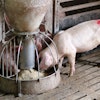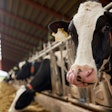There are so many available types of anti-mycotoxin agents that finding the “best” is nothing less than a chore for most feed formulators, be it for pigs or poultry feeds. First, we have the different clays (bentonites, zeolites, etc.) that have been used traditionally as the first available agent since times immemorial. Today, we believe these clays work best for polar mycotoxins, such as aflatoxins. Not twenty years ago, yeast derivatives emerged with claims against non-polar mycotoxins (those less well-known mycotoxins most frequently found in non-maize cereals). And, to make things even more interesting, we are also offered for consideration modern-era enzymatic mycotoxin deactivators. So, which one is the best?
In my opinion, if you use maize and you know your maize is going to be contaminated with aflatoxins, then there is no reason why not to use the inexpensive bentonite or one of its relatives. On the other hand, if your cereals, including maize, are known to suffer from non-polar mycotoxins, then I believe money is better spent on the other two types. They both cost about the same to use, so they better be equally effective, no?
Finally, if your formulas contain a mix of cereals with a corresponding mix of mycotoxins, and you suspect their levels are above the safety line, you can use a mix of all available technologies (does such blended product exist today in the market?) or go back to diluting the problematic cereals with clean ones — but that means one has to test all batches. So, the next question becomes, does it pay to use an anti-mycotoxin blend without checking mycotoxin levels, or use a specific agent after you test all incoming cereals? Interesting times!














